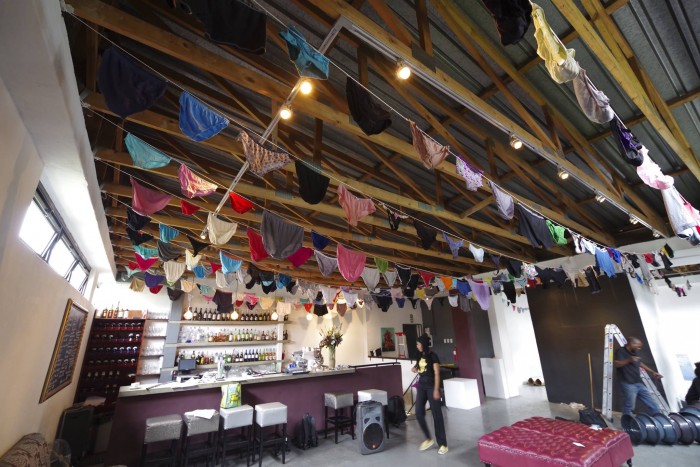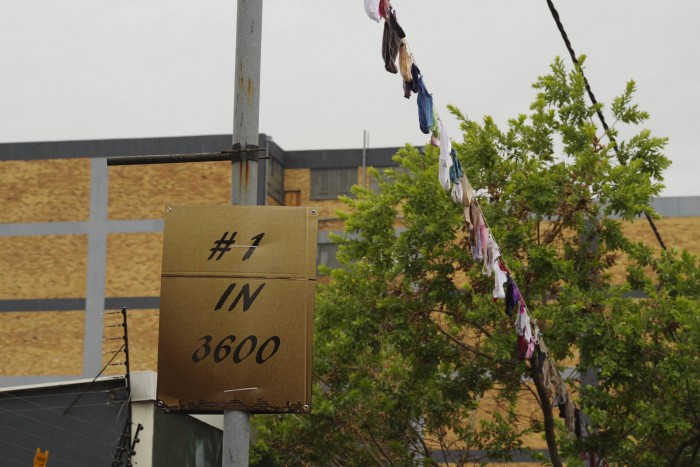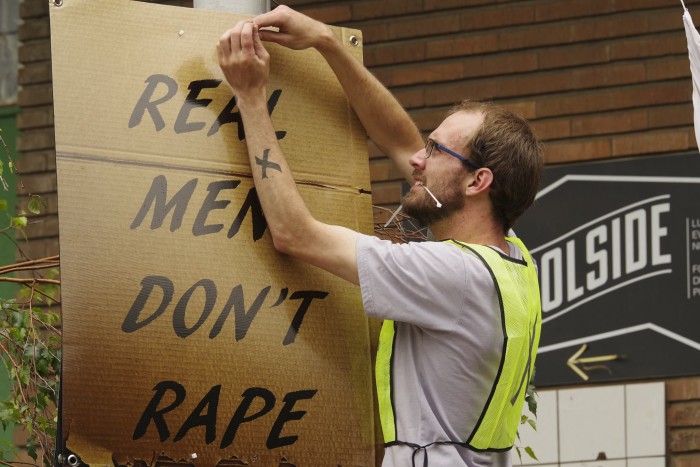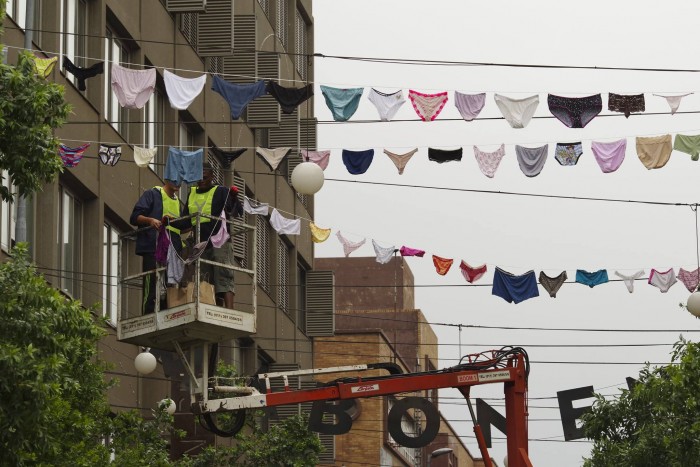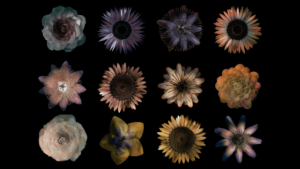Artists hung 3600 pairs of used women’s underwear above the city of Johannesburg’s Maboneng Precinct to bring awareness to the rape crisis in South Africa. Created by Jenny Nijenhuis, Nondumiso Msimanga and Tanya Pampalone, the installation is especially poignant because the country is currently observing 16 Days of Activism for No Violence Against Women and Children, a time when South Africans are challenged to acknowledge that eradicating violence is a social responsibility as much as it the responsibility of government and law enforcement.
SA's Dirty Laundry is an artistic intervention. It consists of a 1.2-kilometre washing line displaying 3600 pairs of panties. 3600 is what is estimated to be the number of rapes that happen daily in SA. However, this number has been disputed. According to Africa Check, an organisation that tests the accuracy of statistics and facts reported in the media, the methodology used to arrive at 3600 rapes per day is flawed because the artists used a reporting rate for Gauteng women aged 18 and older. This reporting rate cannot be applied to national rape statistics, which include male and child victims.
“Sexual violence is one of South Africa’s most pressing social problems but we know very little about its true extent and scale. Fabricated rape statistics shouldn’t be used to plug these holes in our knowledge,” wrote Africa Check’s Kate Wilkinson. “Accurate information – no matter how limited – should be the basis of any form of advocacy.”
But, as one volunteer pointed out to the Guardian, even one pair of panties is one pair too many. “It made me think that today, some girl is being raped somewhere,” she added.
So far, the responses to the campaign have been positive. Under the hashtag #SasDirtyLaundry, the artists were able to call for underwear donations from sexual assault and rape survivors all over the country.
“The intention is to bring this message to people on the street, and not just to the audiences that frequent galleries,” wrote the artists. “We hope to use the influence of the project to effect change. We want people to “see” from a different perspective and to be aware that we can make a difference one person at a time.”
The installation hung alongside a number of performances and art pieces dedicated to the cause. It was hosted and supported by Soma Art + Space.

